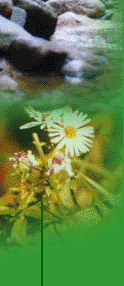|
I would strongly recommend brown house crickets Acheta domesticus if you are intending to keep crickets for a long period of time as they are easily kept in captivity. Most other species of crickets don't live as well together. Black field crickets require higher levels of protein than browns, these can also be kept but kill each other at a faster rate.
HOUSING
A large sized plastic container such as a lunch box or fish tank will be needed for housing, it will need plenty of air holes which can be made in cling film placed over the top or simply piercing holes through a plastic lid which must be tight fitting to prevent escapee's. They need to be kept at room temperature or higher around 18 degrees Celsius is a good minimum and 32 degrees Celsius as a maximum. The crickets are very territorial and will try and kill each other and the injured crickets will fall food to the others. To reduce this you will need cardboard egg boxes or toilet roll tubes for the crickets to hide in. To stop crickets climbing the sides put a rim of cello tape sticky side down around the inside of the container, the crickets will not be able to climb this.
FEEDING AND WATER
Feeding the crickets regularly and with the right foods is very important, The crickets need plenty of nutrition to survive and breed and the nutrition from the crickets will be passed on to your carnivorous invertebrate/reptile/tarantula it is important to keep them healthy. Crickets require a high-protein diet. Most species of cricket are omnivorous this means they eat both meat and plant matter. I would recommend porridge oats and bran as well as fresh fruit and vegetables as their main diet because if they are always well fed they will often eat one each other. You could also try making a mixture of dried dog or cat food or crushed dog or cat dry biscuits mixed with milk. Water should be placed in the tank in a container such as a jam jar lid or pop bottle top filled with cotton wool to prevent crickets falling in and drowning.
Below is a table of typical nutritional values of 4 dry foods. The table shows values per 100g and will vary slightly from brand to brand as these are the averages of 3 brands. The values shown in red are the highest value in each row.
|
|
Bran |
Wheat Bisks |
Digestive Biscuits |
Porridge Oats |
|
Energy |
791 KJ |
1440 KJ |
1940 KJ |
1503 KJ |
|
Protein |
16.3 g |
11.2 g |
6.3 g |
12 g |
|
Fat |
5.9 g |
2.7 g |
21.5 g |
8 g |
|
Fibre |
44.5 g |
10.5 g |
2.3 g |
9 g | This table can be used to evaluate what foods you want to give to your crickets depending on what you want them for. If the cricket mortality rate is high you can bring it down by increasing the protein. Adult females will need more fat if you want a higher and more successful egg laying rate. It is often best to mix ingredients rather than use just one, I usually use all four of the above and grind them into small pieces and add to the bottom of the tank.
CLEANING THE TANK
Crickets do give off a slight odour when the tank becomes filed with waste, but if the tank is kept clean and free from mites, there should be no problems. The main way of reducing odour is regularly changing the cotton wool in the water dishes, which can gather waste matter. Keep the tank dry and quickly remove dead crickets as this can spread disease. Keep the feed dry as it will mould and spoil if it contains moisture.

|
| HOME |
|




